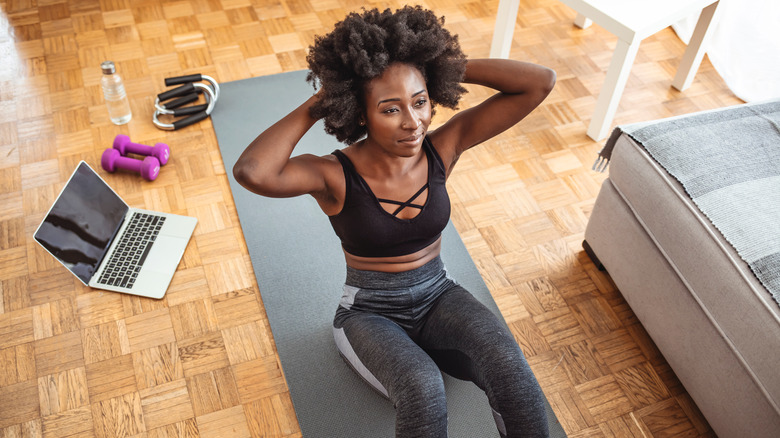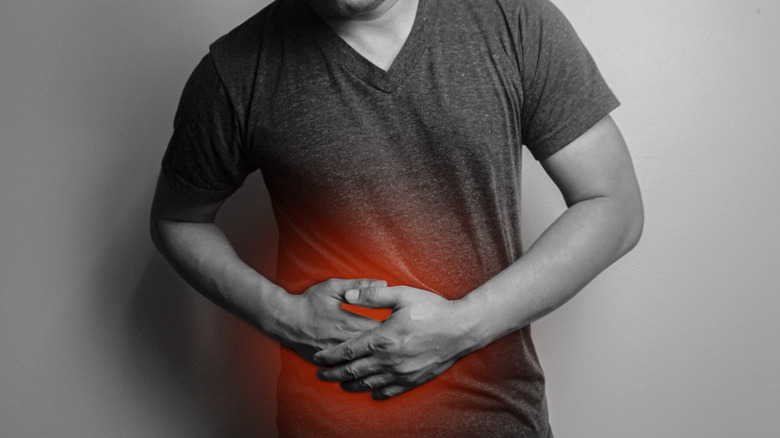What It Means When Sit-Ups Give You Stomach Pain
Pushing too hard for a flat stomach can be harmful in more ways than one. If your plan for increasing core strength involves sit-ups, there are a few things you should keep an eye out for while exercising. Stomach pain that results from these ab exercises can be a sign of something serious.
Sit-ups used to be an essential part of strength routines, meant to help stabilize your core. However, the cost of overdoing them can be high. According to medical experts at Harvard University, sit-ups can pull on your hip flexors and lead to lower back pain (via Harvard Health Publishing). But the pain from sit-ups isn't just limited to your back. What if you feel pain specifically within your abdomen?
When doing a sit-up, one of the biggest muscles involved in the movement is the rectus abdominis (via azcentral.com). This muscle runs the length of your abdomen, from your ribcage to your pelvis. When you do a sit-up, your rectus abdominis engages to help pull your spine off the floor. Another muscle in use during sit-ups are the obliques, which can be found along the sides of your abdomen (via Healthline).
Watch for these warning signs while exercising
A sudden, severe pain in your abdomen while doing sit-ups can be the result of a few things. Dehydration can cause cramping of your abdominal muscles, and overexertion can cause them to contract violently (via LiveStrong). If you eat immediately before doing sit-ups, your gastrointestinal tract can show painful signs of distress as well. Consuming electrolytes, and resting after exercising can help alleviate abdominal cramps. Having a good bowel movement can also help ease discomfort in your gastrointestinal tract.
In some cases, acute abdominal pain can be a result of a tear in the abdominal muscles, which can be caused by improper sit-up technique. If your doctor suspects an abdominal tear, also known as an abdominal strain, it's important to rest the muscles and apply ice to the affected area. To avoid stomach pain, consider warming up before exercising, not pushing yourself too hard, and avoiding food for a few hours beforehand. Better yet, avoid the sit-ups altogether and consider alternate ab exercises such as planks.


